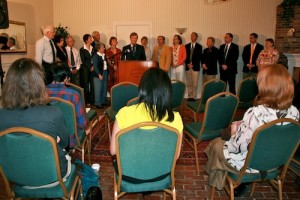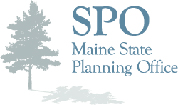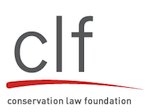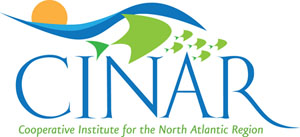Much of the first comprehensive State of the Gulf of Maine Report was released during the recent 20th anniversary meeting of the Gulf of Maine Council on the Marine Environment in early June.
Each theme paper on a particular topic fits under one of six priority areas of concern in the Gulf, and all are designed to be updated regularly as new information becomes available.
“Because the Gulf of Maine is still in good health, we have a real opportunity here to manage one of North America’s natural treasures in a manner that will benefit our children and our children’s children,” said Dr. Jay Walmsley, editor of the report and Oceans Project Leader, Oceans and Coastal Management Division, Department of Fisheries and Oceans, Canada.
“In order to do so, we need to know a bit more about some of the issues that are facing us. This is why the council is producing this report.”
The report recognizes six priority areas: Climate change, fisheries and aquaculture, coastal development, eutrophication (nutrient enrichment), biodiversity and energy issues. Under the umbrella of the six priority areas, papers that are already available on the GOMC website (link below) are: At-risk and invasive species, energy issues, climate change and its effects on humans, climate change and its effects on the environment, and emerging issues – the one paper that covers all priority areas.
Coming soon, said Walmsley, will be nutrient enrichment (or eutrophication), and contaminants and their effect on ecosystems and human health.
“The focus is not on policy-makers, educators or NGOs (non-governmental organizations). Oddly, it’s on professional people who will repackage the information for their own use. The coastal managers, communicators, technicians, planners, academics – people who work with data,” said Walmsley. “The theme papers give an in-depth overview, and people who are really interested can go to the reference documents to do their own digging,”
Some challenges to the Gulf’s ecosystem may be seen in the Emerging Issues paper, written by Peter G. Wells of the International Ocean Institute and Faculty of Management at Dalhousie University, Halifax, Nova Scotia. In one column of a table listed early in the paper,Wells identifies existing, known impacts threatening 10 aspects of the Gulf from aquaculture to microbial pathogens. The next column lists projected threats from emerging issues that may have escaped public notice until now. However, one potential effect–deep-water oil drilling–noted in the paper has emerged in spectacular fashion in recent months in the Gulf of Mexico .
“Some key emerging issues are ocean acidification, new synthetic chemicals, alternative energy developments, future minerals extraction from deeper waters, and the impact of marine spatial planning on resource use,” said Walmsley. “Each theme paper focuses on a priority area and can be updated regularly. If the data changes regularly, we will update biennially,” said Walmsley. “One of the nice things about the report, it’s not stagnant. Initially, it’s an introductory document for people who don’t know the area. They can learn where the Gulf of Maine is and why it’s important.
“We want to provide specific, accurate information about the Gulf — not every aspect, but those six priority areas,” said Walmsley.
One of the impressive things about the report besides the content, Walmsley noted, is the time it took to put the whole thing together.
Editor Jay Walmsley displays some of the published papers in the State of the Gulf Report. Photo credit: Jennifer Hackett/DFO
“I was called in right after the decision to do this was made,” she said. “I was asked to do a scoping document in January of 2009.” The scoping document was done in March, a task team was set up and a work plan initiated. By June 2010, five authors had completed five documents that went through an “onerous review policy.”
“It took one year to think it up and six months to do it,” said Walmsley.
The documents are “information rich,” said Walmsley. “Each author was limited to 12 to 15 pages. We tried to avoid opinions. We’re not there to tell people what they’re doing wrong, but to tell people what’s happening. Each paper has a section on responses, indicating what’s already in place. It’s an objective overview.”
The team identified a total of 14 papers to be written to start. Walmsley hopes other academics will want to contribute papers and plans to do one herself.
“In terms of policy and planning, we hope this will be the go-to document so people can plan where to go next,” she added.
The Gulf of Maine Council on the Marine Environment, for instance, will use the document when compiling its 2012 action plan.
The State of the Gulf of Maine Report is available at: http://www.gulfofmaine.org/state-of-the-gulf/
Print




















